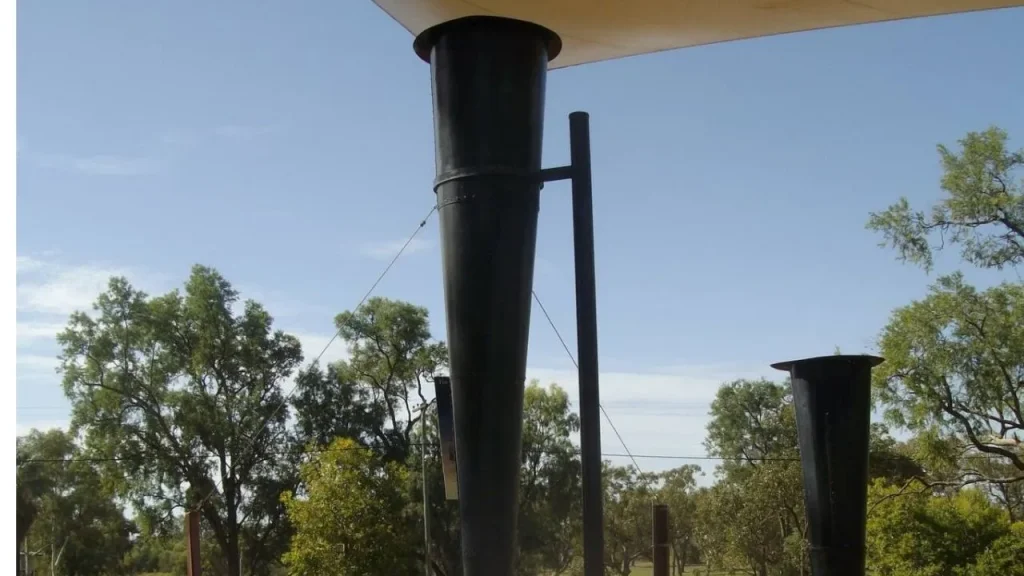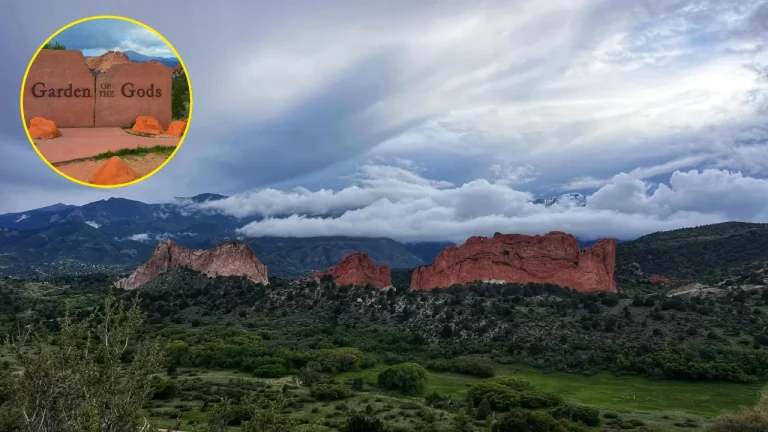TV channels are abuzz with news on the latest hurricane to batter the South Eastern US, Hurricane Helene. As you watch this news, you might wonder why we are naming hurricanes or cyclones with human names. Where did it all start? This tradition started with one man – Clement Wragge. He was an eccentric yet brilliant meteorologist from the 19th century. He is widely known for initiating the practice of naming cyclones. But his practice began with a twist: Wragge chose names of women and politicians he didn’t like.
He described the cyclones as ‘causing great distress’ or ‘wandering aimlessly.’ Ironically, he matched those qualities with the women and politicians that he disliked. Apart from his witty touch, the names were easier to transmit and people understood them quickly. His unique method of making weather reports more memorable left a legacy that continues today. Let’s find out more about this unusual meteorologist.
The Birth of Cyclone Naming
Wragge’s idea of naming cyclones came from his frustration with the political system of the time. He was passionate about his work but felt that the government and politicians were not giving enough support to meteorological research. Frustrated by what he saw as negligence, he began naming cyclones after politicians who were obstructive or unsupportive.
Wragge’s choice to name cyclones after disliked politicians added a layer of humor to his weather reports. It wasn’t just any politicians, though; he specifically targeted those whose policies he disagreed with or whose actions annoyed him. He believed that naming cyclones after these individuals would increase public attention on the storms and make them more memorable. In a letter to the Queensland Times in 1899, Wragge explained his reasoning behind naming the cyclones. “What better way,” he wrote, “to keep the names of these political figures in people’s minds than to have them associated with the destructive forces of nature?” His wit was as sharp as his scientific skills, and this technique made his weather reports popular among the public.
“What better way, to keep the names of these political figures in people’s minds than to have them associated with the destructive forces of nature?”
Clement Wragge

Impact of Clement Wragge’s System of Naming Cyclones
At the time, meteorological reporting lacked the standardization we see today. Cyclones were simply numbered, making it difficult for the public to follow weather updates. Wragge’s decision to give them human names changed that.
This practice made it easier for people to remember and follow the progress of storms. Instead of relying on technical terms or numbers, the public could now track a cyclone named after a known figure, which caught their interest. Naming cyclones also allowed Wragge to inject some humor into the often serious world of weather reporting. His eccentric personality shone through in his naming system, even as his predictions and warnings remained accurate and reliable.
Initially, Wragge wanted to name cyclones using the letters of the Greek alphabet or Polynesian mythical figures. However, Wragge’s later decision to use politicians’ names wasn’t just about humor. It was also a form of protest. At the time, many politicians were indifferent to meteorological research, and funding for weather stations was scarce. Politicians whose misfortune was named after cyclones include James Drake, Edmund Barton, and Alfred Deakin. In a time before social media or other forms of public protest, this was an effective way to get his point across.
The Encyclopedia of Weather and Climate notes that Wragge was well ahead of his time in terms of understanding meteorology. His innovative cyclone-naming technique was just one example of how he combined science with public communication, making meteorology accessible and engaging to the public. By the end of the 19th century, Wragge’s weather reports were followed by many in Australia, and his cyclone-naming practice was widely accepted.
Clement Wragge’s Challenges and Criticisms
Wragge’s cyclone-naming system was not without controversy. Many politicians were unhappy about having their names attached to destructive storms. Some accused Wragge of undermining their reputations, while others argued that his method was unprofessional. A letter to the editor in the Sydney Morning Herald in 1900 criticized Wragge, calling his method “a mockery of serious scientific work.” Despite these criticisms, Wragge continued his practice undeterred, confident in his scientific contributions.
Wragge himself, in response to these criticisms, reportedly remarked that the names were simply a tool for helping the public understand the dangers of the weather, and if certain individuals were remembered in connection with cyclones, it was purely a coincidence.
However, the humor in Wragge’s approach resonated with many, especially the public, who saw it as a way to lighten the often grim business of cyclone warnings. Over time, despite the initial backlash, Wragge’s cyclone-naming practice was recognized as a practical and memorable way to communicate weather patterns to the public. By the early 20th century, his methods had gained widespread acceptance.
Clement Wragge’s Early Life and Meteorological Career
Clement Lindley Wragge was born in 1852 in England. His interest in weather began early, leading him to pursue meteorology as a profession. Wragge began his career in weather reading in 1879 by setting up weather stations in North Staffordshire, England. He later moved to Scotland, where he conducted meteorological observations on Ben Nevis. He received the Scottish Meteorological Society’s Gold Medal in 1882. However, he wasn’t appointed as the Summit Observatory’s Superintendent. In 1883, he relocated to Australia, where he quickly gained prominence for establishing weather stations. These include Mount Lofty, and creating a meteorological organization in Queensland.
Appointed as Queensland’s Government Meteorologist in 1887, Wragge developed an extensive network of weather stations, implemented storm signal systems, and connected internationally with New Caledonia. He earned the nickname “Inclement” for his accurate weather predictions and caused controversy among other meteorologists by issuing reports for all of Australasia.
Wragge’s work extended beyond meteorology, contributing to agriculture and mining. He published an almanac and tried to end the 1902 drought with Steiger Vortex Cannons, an experiment that failed. He resigned in 1903 when funding cuts followed Australia’s Federation.

Later Developments in Cyclone Naming
While Wragge was the first to name cyclones with human names, it took several decades for this practice to become standardized worldwide. In 1950, the U.S. National Weather Service adopted a similar system for hurricanes, using women’s names to identify storms. This practice persisted until the 1970s when it was expanded to include male names as well.
The decision to use both male and female names reflected changing societal attitudes and a growing recognition of gender equality. This standardization of cyclone and hurricane naming also made it easier for international meteorological organizations to collaborate on weather forecasts and warnings.
Today, the World Meteorological Organization (WMO) maintains lists of names for tropical storms and cyclones. These names are chosen from various languages and cultures, and each region has its own set of names that rotate every six years. If a cyclone is particularly destructive, its name is retired from the list, ensuring that future storms do not carry the same name. This practice honors the memory of those who suffered from the storm while also preventing confusion in future weather reporting.
Clement Wragge’s Legacy
Clement Wragge’s contributions to meteorology went far beyond the creative naming of cyclones. His work in establishing weather observation systems and improving forecasting techniques was pivotal for Australia in the late 19th and early 20th centuries. According to records from the Australian Bureau of Meteorology, Wragge was the first meteorologist in Australia to introduce daily weather charts. His efforts to standardize weather reporting helped lay the groundwork for the formal meteorological services that would later be adopted across the country.
Wragge’s cyclone-naming system, though initially controversial, had a lasting impact. The World Meteorological Organization (WMO) credits him as a pioneer in making weather information more accessible and understandable to the public. His choice to use human names for cyclones helped simplify communication and made it easier for communities to track and prepare for storms. The practice also made a significant shift in meteorological communication by moving away from the impersonal numbering system that had been used previously.
In addition to his work in Australia, Wragge played a role in international meteorology. He corresponded with meteorologists around the world, sharing his findings and methods. His cyclone tracking and forecasting techniques were ahead of his time and influenced later developments in tropical cyclone monitoring.
“Wragge was a pioneer, using humor and creativity to make weather science engaging. His contribution goes beyond his era, shaping how we communicate about storms today.”
Dr Jack Bevan
Conclusion
Clement Wragge’s decision to name cyclones after politicians he disliked was both a form of protest and a way to engage the public in weather reporting. His unique approach, which started in frustration with political inaction, has since evolved into a standardized system used by meteorologists worldwide. Wragge’s combination of scientific expertise and wit ensured that his legacy would endure, and today, we continue to use human names for cyclones, just as he once did.
Also Read:
The Hidden Connection: Energy Savings And Heater Repairs
“The Statue of Liberty” A Gift From France To The USA Funded By The French People!










